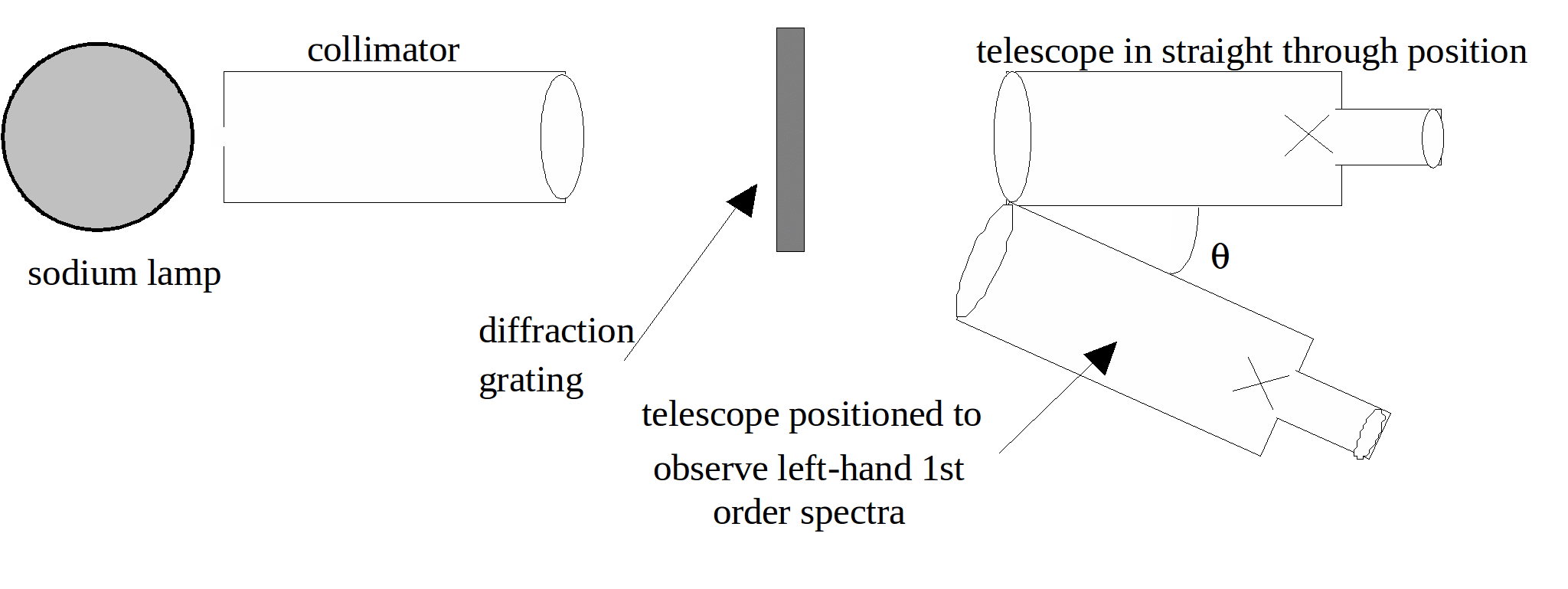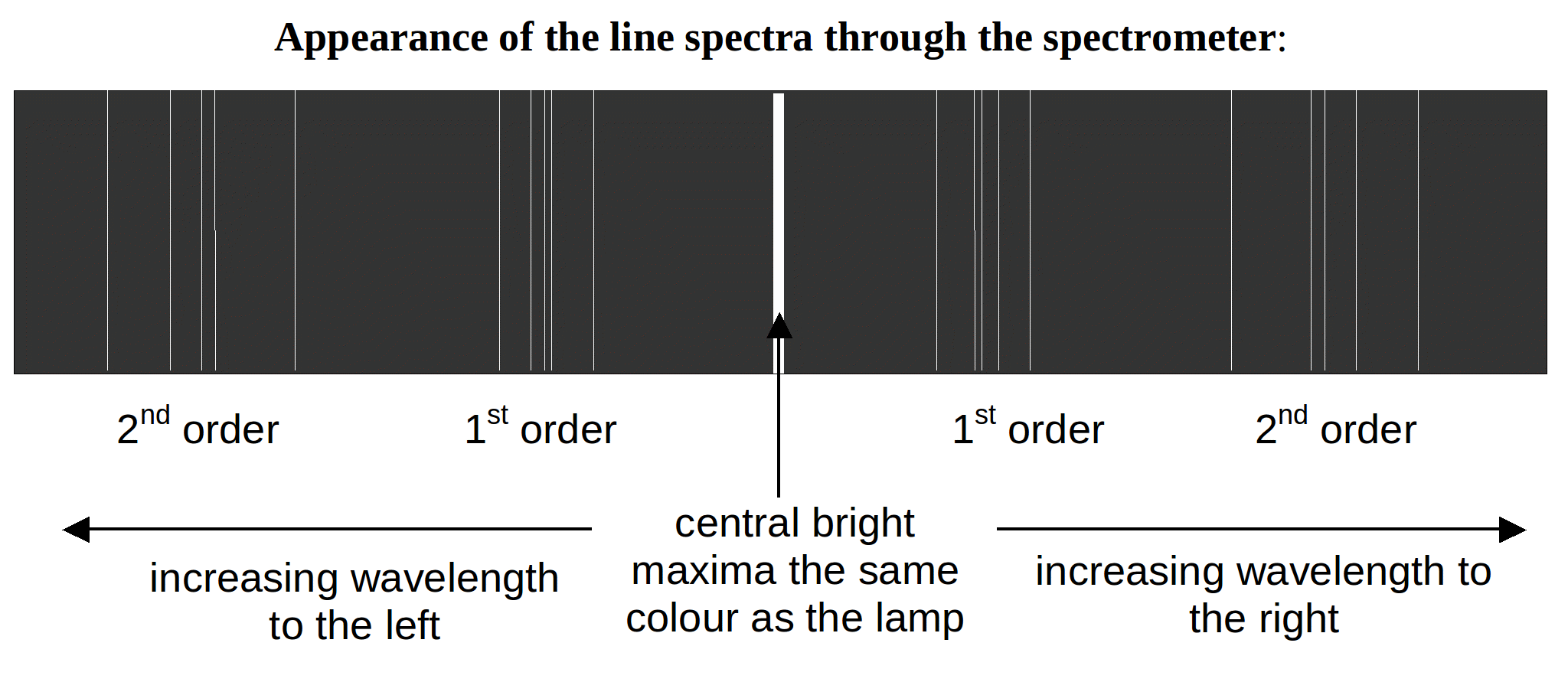Apparatus:
Spectrometer, sodium discharge tube with its power supply, diffraction grating, magnifying glass, black cloth light shade.

Procedure:
(a) Setting up the spectrometer
1. Turn on the sodium lamp (it will take about 5 minutes to fully come on).
2. Adjust the eyepiece of the spectrometer telescope so that the cross-wires are in focus and adjust the telescope so that it is in focus when viewing a distant object.
3. Place the sodium lamp in position. Adjust the collimator so that the image of the slit when viewed through the telescope in the straight through position is in focus.
4. Place the diffraction grating on the spectrometer table so that the plane of the grating is perpendicular to the direction of light from the collimator, and the grating rulings are parallel to the collimator slit. This second adjustment can be checked later by moving the grating, or spectrometer table adjustment screws, until the observed spectral lines are as clear as possible.
5. Locate the left-hand 1st order spectra. Adjust the width of the collimator slit until clear yellow/orange spectral lines can be seen through the telescope. YOU WILL NEED TO SHADE THE DIFFRACTION GRATING FROM OTHER LIGHT SOURCES.
In order to see the higher order maxima it may be necessary to increase the width of the collimator slit. At the same time check that many orders can be seen each side, adjusting the diffraction grating orientation and the spectrometer table adjustment screws as necessary.

(b) Measurement of wavelengths
1. If![]() is the distance between the centres of adjacent lines,
is the distance between the centres of adjacent lines,![]() is the order of the spectrum, and
is the order of the spectrum, and![]() the wavelength then
the wavelength then![]() or
or![]()
2. Locate the left-hand side 1st order spectra. Align the cross-wires with one of the bright yellow lines and record the angle reading,![]() Next locate the same line in the right-hand 1st order spectra and record the angle reading,
Next locate the same line in the right-hand 1st order spectra and record the angle reading,![]() The angle of diffraction,%theta is equal to
The angle of diffraction,%theta is equal to![]()
3. Use![]() to calculate the wavelength of the selected line.
to calculate the wavelength of the selected line.
4. Repeat the above for the red & green lines.
(c) Verification of the diffraction grating's![]() value
value
6. The sodium line spectrum contains two bright yellow lines that are very close together.
Their wavelengths are: 589.0 & 589.6 nm.
7. Use these wavelength values to determine the lines per metre, (![]() ) of the grating and compare your value with that written on the grating.
) of the grating and compare your value with that written on the grating.
(d) 2nd Order Spectra
8. If you have time, repeat (b) & (c) using the 2nd order spectra.